The biggest component on this full duplex Wi-Fi radio? The antenna
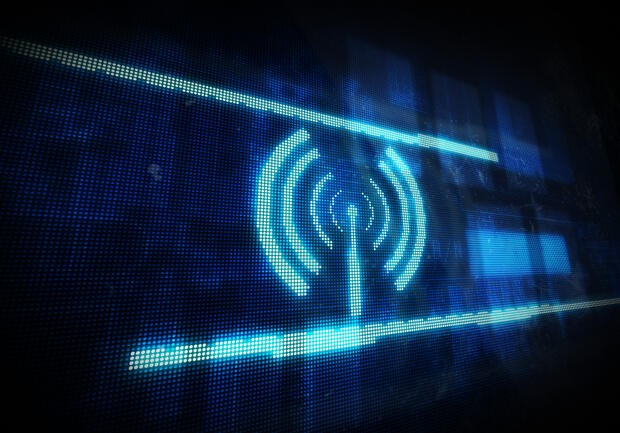
Last year, researchers at Columbia University achieved what was once considered impossible—the creation of integrated circuits (ICs) that allow full-duplex (transmit and receive simultaneously at the same frequency) radio communications.
Until then, IC radio transceivers (other than devices such as cell phones using frequency-division duplexing) either received or transmitted, but never at the same time. An IC radio transmitting while trying to receive a signal on the same frequency would completely overwhelm the receiver with what is called self-interference (Figure A).
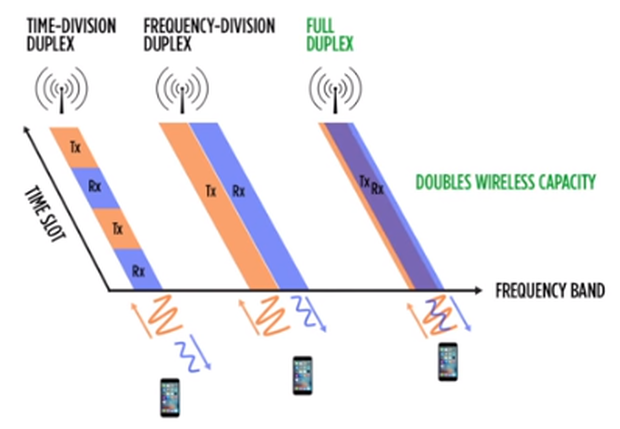
So the Columbia University team, led by Harish Krishnaswamy, associate professor of electrical engineering, came up with a way to cancel the local transmitter's signal in the local receiver circuitry. That way, the remote signal can be heard, allowing full-duplex operation. This is significant, in that it results in an automatic doubling of wireless capacity at the radio's physical layer—something worthy of keen interest in our bandwidth-hungry digital world.
What's more, the Columbia University research team figured out how to make all this work on a tiny IC (Figure B).
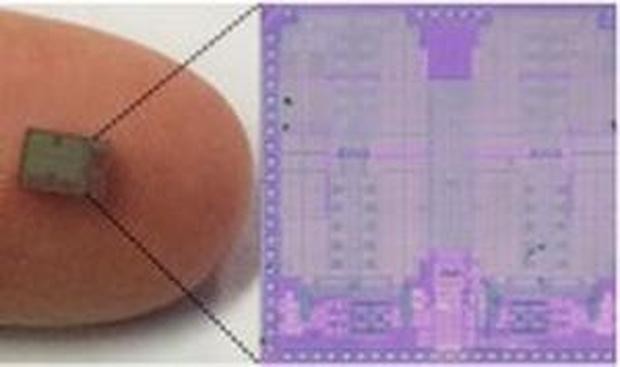
SEE: Researchers accomplish full-duplex radio communications using an IC.
Columbia researchers claim another first
Well aware of the IoT revolution and the desire for smaller physical packages, Krishnaswamy and Ph.D. student Negar Reiskarimian felt they could eliminate the need for separate transmit and receive antennae (Figure C). Interestingly, full duplex radio operation using a single antenna is not new, according to Reiskarimian in the Columbia University press release.
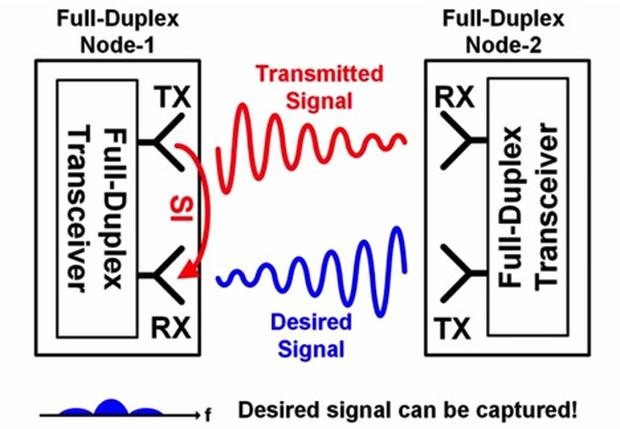
The technology—Ferrite (magnetic materials) circulators—disrupts the Lorentz Reciprocity principle, allowing transmitting and receiving to occur on the same antenna simultaneously. However, traditional circulators are too big, expensive, and not as effective as Krishnaswamy and Reiskarimian would like.
"Reciprocal circuits and systems are quite restrictive because you can't control the signal freely," said Reiskarimian, who developed the team's IC circulator and is lead author of the team's Nature Communications paper. "We wanted to create a simple and efficient way, using conventional materials, to break Lorentz Reciprocity and build a low-cost nanoscale circulator that would fit on a chip."
Working in the Columbia High-Speed and Mm-wave IC (CoSMIC) Lab, Krishnaswamy and Reiskarimian were able to design and fabricate a miniaturized circulator using switches to rotate the signal across a set of capacitors emulating the non-reciprocal "twist" of the signal that is seen in ferrite materials.
"Our circulator is the first to be put on a silicon chip, and we get orders of magnitude better performance than prior work," Krishnaswamy said in the press release. "We've shown that Wi-Fi capacity can be doubled on a nanoscale silicon chip with a single antenna. The capacity increase has enormous implications for devices like smartphones and tablets."
Figure D shows the silicon chip circulator resting in the middle of a ferrite-based circulator.
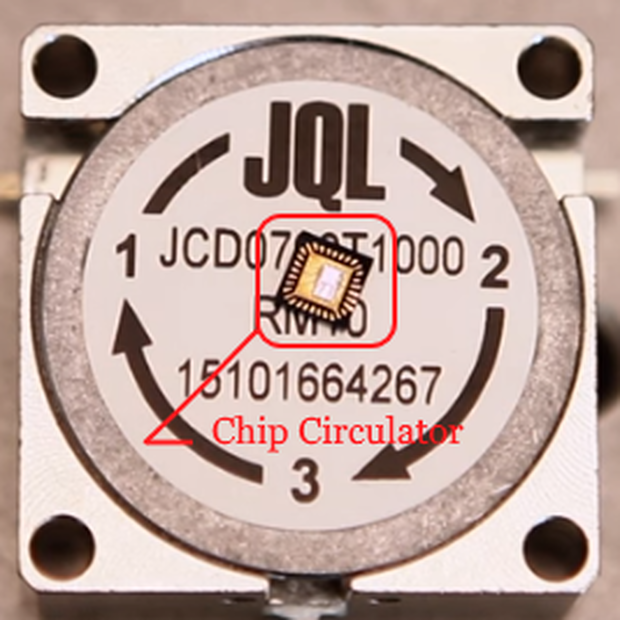
"Being able to put the circulator on the same chip as the rest of the radio has the potential to significantly reduce the size of the system, enhance its performance, and introduce new functionalities critical to full duplex," said Ph.D. student Jin Zhou, who integrated the circulator with the full-duplex IC receiver he helped design.
Research that is practical and educational
Krishnaswamy is proud of the research team for designing and demonstrating a practical RF circulator and integrating it into a full-duplex IC receiver that exhibits a factor of nearly a billion in echo cancellation. "It is rare for a single piece of research, or even a research group, to bridge fundamental theoretical contributions with implementations of practical relevance," he said. "It is extremely rewarding to supervise graduate students who can do that."
As to why this is important, tell mobile device developers there is technology that allows wireless full duplex, doubles throughput capacity, and needs only one antenna to accomplish that, and see what they say.
This YouTube video by Columbia University, Harish Krishnaswamy, and Negar Reiskarimian offers a detailed explanation of the IC circulator and demonstrates the full duplex radio circuit IC.
The original article can be found here.